Bow Building Class with Clay Hayes
A peremptory note from Clay: For information on small group bow building classes, see the Traditional Archery page or shoot me an email via the contact form. ch
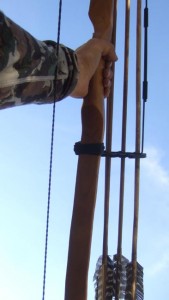
My Osage selfbow made at a bow building class with Clay Hayes.
Ever since I was a kid I was fascinated by bows and bow building. There was a park nearby where saplings grew and my brothers and I would search for the perfect bow. I didn’t know it at the time, but these stick and string bows would turn into an obsession for me.
Fast forward 10 years I was working with native Wisconsin woods, actually shaping the wood, using directions in one of the first bow building books, The Bent Stick, by Paul Comstock. (This was long before the days of the internet and online tutorials, and well before I could afford any kind of bow building class.) I didn’t really know what I was doing, but I built what I thought was a great bow. I wanted to hunt deer with it and needed a draw weight of at least 45 pounds to feel comfortable. I spent weeks making it, tillering it, pulling it back and shooting it into a target. When I was finally happy with the bow, I took it to the local Gander Mountain to have them check the draw weight.
The guy behind the counter laughed when he saw me walk in with it. He wasn’t impressed with a bow that didn’t have pulleys, recurves or a reflex. And, he sure didn’t think it was strong enough to hunt deer with. But, he humored me and took it in the back to check the draw weight. About a minute later he came out looking a little embarrassed. It was so strong he couldn’t pull it back. He had to have me do it for him. The bow pulled a whopping 92 pounds! (That bow was way overbuilt, and I have since brought it down to 68 pounds after learning more about building bow.)
Over the next decade I made eight or nine bows emulating the style in The Bent Stick and I thought I was a pretty good bowyer… until I saw a video on bow building by Clay Hayes at TwistedStave. His bows were sleek, beautiful and it looked like he built them a lot faster than I did.
I contacted Clay and we sent a few emails back and forth. I knew he didn’t usually give one-on-one instruction but instead preferred to teach an entire group at once. So, I felt especially honored when he agreed to do a one on one bow building class with me. We arranged a week in May for me to go up to Idaho and learn from a master.
Clay met me at the airport in Idaho with a friendly smile and we drove through some of the most beautiful country I have ever seen. Rivers, small towns and mountains whisked by as we chatted easily on the one hour trip to his house. As we traveled, I almost forgot I was there to learn how to make a bow… I wanted to get out and explore the wilderness and learn about this new area from Clay.
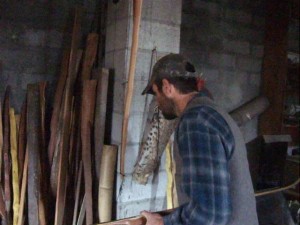
Clay picking through a massive stack of bows and staves in during our bow building class.
But, when we got to his house and he showed me his workshop, I felt the rush of bow-making. Wood shavings on the floor, bows in different stages stacked up against the wall, and that telltale smell of fresh-cut wood. It was if it was my first time making a bow. And in a way, it turned out to be true since Clay’s way of making a bow was a complete paradigm shift for me.
Once I was settled in and met his wife and two boys, Clay and I got to work building a bow. He had a great selection of staves and we chose a beautiful, straight grained piece of Osage that Clay had cut a few years ago. Like I said, I made a dozen or so bows in the past. I also grew up refinishing antiques and am pretty well skilled in woodcraft after building a log cabin and all the furniture in it from scratch. But Clay’s understanding of the grain and minute peculiarities of each potential bow blew me away. He taught me to look for things in the wood that I didn’t even know existed. It was an eye-opening experience.
And the lessons in bow building just kept coming. He showed me a new way to rough the bow out, taking wood off in what I previously considered wild abandon. I used to start with the shape of the final bow and take wood off slowly, much like taking my first 92 pound bow down to 68 pounds. Clay didn’t mess with that. He had me take wood off in huge chunks until the bow was close to its final shape.
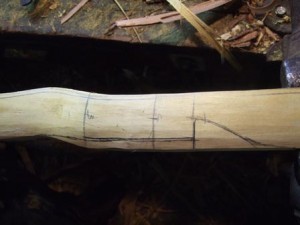
Clay’s sketch of the handle on the bow. The arrow shelf was new for me.
At that point he grabbed a pencil and sketched the bow out on the stave. He built an arrow shelf right into the bow, another first for me. I had been shooting off my hand for years. He also drew in tips that were much slimmer than any I had on my other bows. He explained that weight toward the end of the bow is dead weight and would just slow the bow down. I had no idea how true this was until I actually shot this new bow days later and felt that “snap.” It’s difficult to describe in words the feeling of transforming a long slab of wood into a bow using nothing but a few hand tools. It almost feels like magic.
You take what really is just a chunk of wood and end up with something you can feed yourself with. In the process you bond with the wood, you get to know its every growth ring, every twist, every turn and every knot. You feel it. I have heard people talk about becoming one with their bow as they build it. I’m not sure if I got to that point, but I knew every centimeter of that piece of wood. I felt it. I don’t know if it
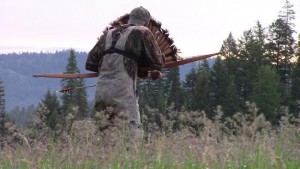
The week was more than just bow building. Clay took me out on a morning turkey hunt.
was wishful thinking on my part or not, but I felt like it wanted to become a bow.
I think that feeling came in part for the respect and care that Clay had for the wood as we made it into a bow. You could see the bow in it long before the wood was shaped into one. It was begging to get out and it was like we were setting it free to become something entirely new. Sort of a different experience and one I suspect you have to feel for yourself. It’s kind of like trying to explain what it feels like to be wet. All the words mean nothing until you feel it for yourself.
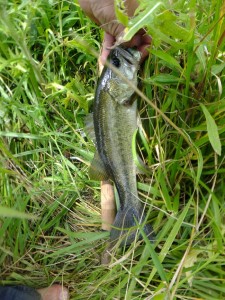
The Potlatch River was a great place to spend an afternoon fishing and canoeing.
Three days after I chose the Osage stave, we were tillering the bow. The process went that quickly. That was another first for me. All my other bows took at least a week to make, and here we were almost done after only three days. And it wasn’t like we were working on the bow non-stop. We spent one morning turkey hunting. Another afternoon we fished and canoed on the Potlatch River. And Clay took me out to explore the wilderness behind his house.
The tillering process went incredibly quickly. Again, I learned a new way to look at the wood to figure out where a little needed to be shaved off. It only took about an hour to get the final tillering done… then it was time to make a string and shoot it!
After hours building the bow, thinking about it before I went to bed every night, and waking up each morning excited to work on it, the moment of truth was finally there. I’ve had a bow break on me the first time I shot it, and the heartbreak is something that I’ll always remember. And no matter how confident I was in Clay’s tutelage and expertise in building bows, I was still a little anxious about shooting my new bow for the first time.
I brought it back slowly, ever so slowly, to full draw feeling for quivers or twinges in the wood, listening for any pops. None came. Safe for the moment. I let the string back to its resting position and re-drew. All good. Then I drew the bow again and again to let the wood feel the bend. At that point I knew I was in the clear. The bow wasn’t going to break on me.
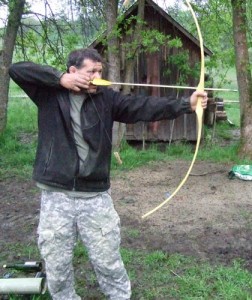
In Clay’s backyard shooting the bow for the first time.
I nocked an arrow, sighted down the shaft and twang… I let the arrow fly into the hay bale. I don’t even remember where I hit the bale. I was consumed with how light the bow felt, how smooth the release was, and how that arrow rocketed to the target with such snap. Wow. The arrow just popped off the string. Amazing.
I shot another 20-some arrows awestruck at the delivery of the arrow. About the 10th shot, when I wasn’t so worried about the bow breaking, it dawned on me that I made this bow! I shaped it with a few hand tools. I created it from a tree. I had an overwhelming feeling of awe and thanksgiving. The entire experience of taking that stave and turning it into a bow was by far the best bow building I have ever had.
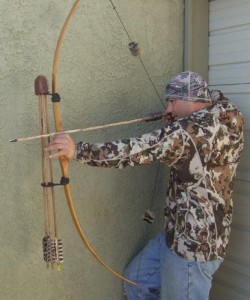
Back in Vegas getting bowtime with my new bow.
Back home in Las Vegas (where I moved a few years ago), things move a little quicker than they do in Idaho. There is always work to do on my wilderness survival skills website but things are a little different for me. I make time to practice with the bow at least once a month. If there is a 6′ or longer piece of wood laying anywhere, I’m compelled to take a closer look at it to see if it could be a bow. I don’t see a dead tree anymore, I see the potential for another beautiful bow. I spend more time looking at the way wood moves, it’s nuances, knots, and growth rings. Wood isn’t just plain wood anymore, its the bearer of possibilities.
If you are looking for a bow building class, I would recommend taking one of Clay’s group workshops. You’ll get the opportunity to meet other bowyers, share your experience with like-minded people, and make what will probably be the best bow you own.
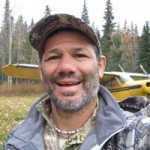 About the author: John Yost is a wilderness survival skills expert located in Las Vegas, NV. With more than 35 years of outdoor experience, and 8 years teaching public high school, he is one of the premier survival skills instructors in the Southwest. He has been to 15+ countries learning and honing his primitive survival skills. He also built a log cabin in the woods using only hand tools and lived there alone for 12 years totally off the grid. You can learn more about John and his wilderness survival skills classes at yostsurvivalskills.com
About the author: John Yost is a wilderness survival skills expert located in Las Vegas, NV. With more than 35 years of outdoor experience, and 8 years teaching public high school, he is one of the premier survival skills instructors in the Southwest. He has been to 15+ countries learning and honing his primitive survival skills. He also built a log cabin in the woods using only hand tools and lived there alone for 12 years totally off the grid. You can learn more about John and his wilderness survival skills classes at yostsurvivalskills.com

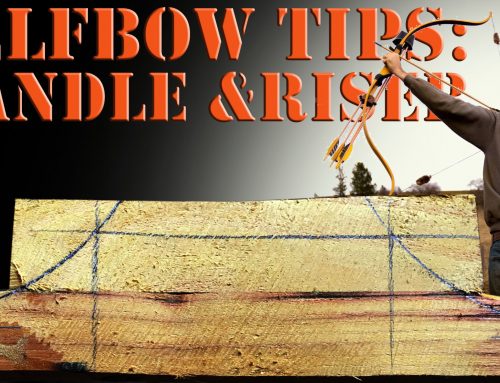
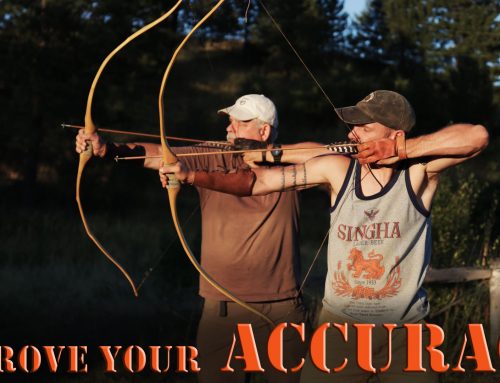
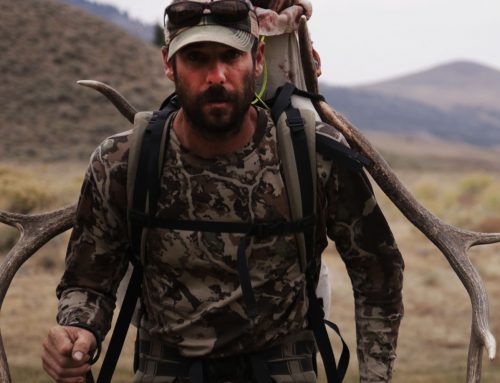
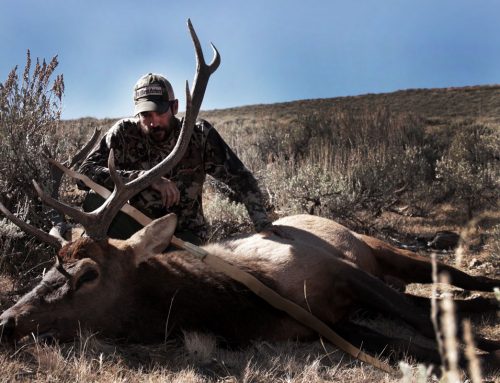
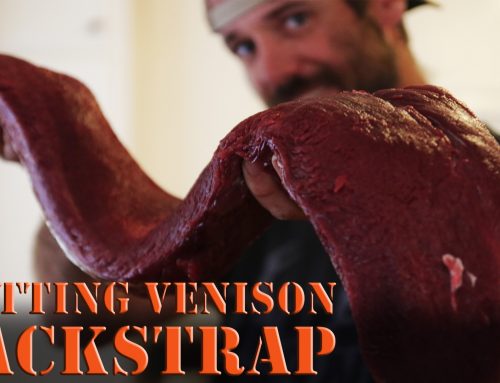
Loved reading this account! I’m very focused on hunting itself right now with my Bear Montana Longbow, but I will make my own bow one day.
Absolutely Awesome!!! Clay’s bow building videos inspired me to build my first bow years ago. Have a blessed week!!!
I asked my wife if I could take the class for our anniversary. She didn’t think it was as good an idea as I did. Haha. That would be the class of a lifetime and I have had many.
Great Story. The part where you mentioned “I made this bow”, brought tears to my eyes. Just like being wet can not to be explained so is building a bow. It can not be explained, It must be experienced. My next bow will be named BST. Blood Sweat & Tears.
Thanks for the invite Clay. I love what you have done and continue to do for the selfbow world.
I was very motivated to build and hunt with a selfbow and arrows that I made on my own. I watched many of your videos and have even talked briefly with you by phone. With yours and others help and encouragement I built my own selfbows and well tuned arrows. I also got some good tips on shooting and hunting.
Last year I hunted bow for the first time in my life. It was with a HHB selfbow that I harvested from my farm. I also harvested a nice Four point whitetail buck from the ground with all my hand made hunting equipment. I was standing 30 feet from where I harvested the Hop Hornbeam Tree the bow stave came from. I let the buck walk past me at 9 1/2 paces and took a quartering away shoot with a double lung pass through. Wow I’m totally hooked now and can’t seem to get the same thrill with any other type of hunting. I’m not saying this type of hunting is easy. What I’m saying is it’s not impossible and extremely rewarding.
Thanks again for promoting this type of hunting and passing on the selfbow building and hunting skills. I’d love to meet you I person some day and just talk.
To anyone thinking about taking a bow building class I’d highly recommend it. It is great to meet other bowyer’s and so many simple questions can be addressed.
Sincerely
Bjrogg
Wonderful read, a class with Clay is on my bucket list for sure. Been a fan and supporter of him for a number of years.🏹
Great opportunity, and definitely something to think about!
Thank you!
I think Clay’s bows are awesome I’d love to someday to take his class that’s a dream of mine to make a bow and take a nice deer with something I made by hand. Keep the videos coming Clay I really enjoy them to.
Clay, thanks for the videos, I’m relatively new to archery and they have been very helpful. My issue has always been my inability to go to full draw and hold it without letting the arrow fly until today. After watching one of your videos yesterday I wanted to figure out a way to hold the draw then let it fly. This is what worked for me, as I start my draw I close my eyes, get set by pull my shoulder back, get set then open my eyes put the arrow tip on my spot then release. My group sizes went down Immediately and consistency went way up. I’ve been shooting for about 4 months about 7 hours a week. I’m 68 years old and play competitive golf but since most amateur tournaments have been canceled archery has filled the void. I really enjoy archery and It will remain part of my regime. Thanks for all the help.
Thanks Al, you might also want to check out the video I did last fall with Joel Turner that addresses target panic.